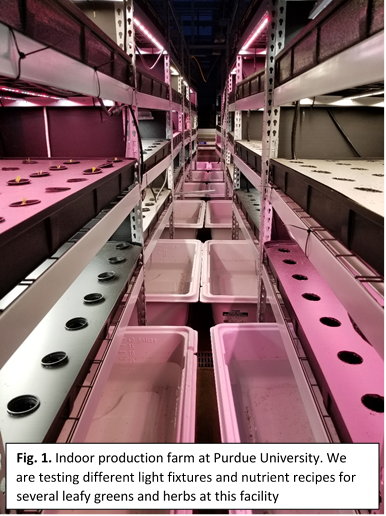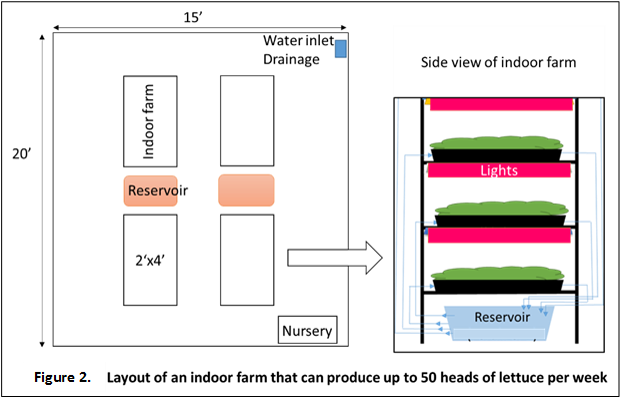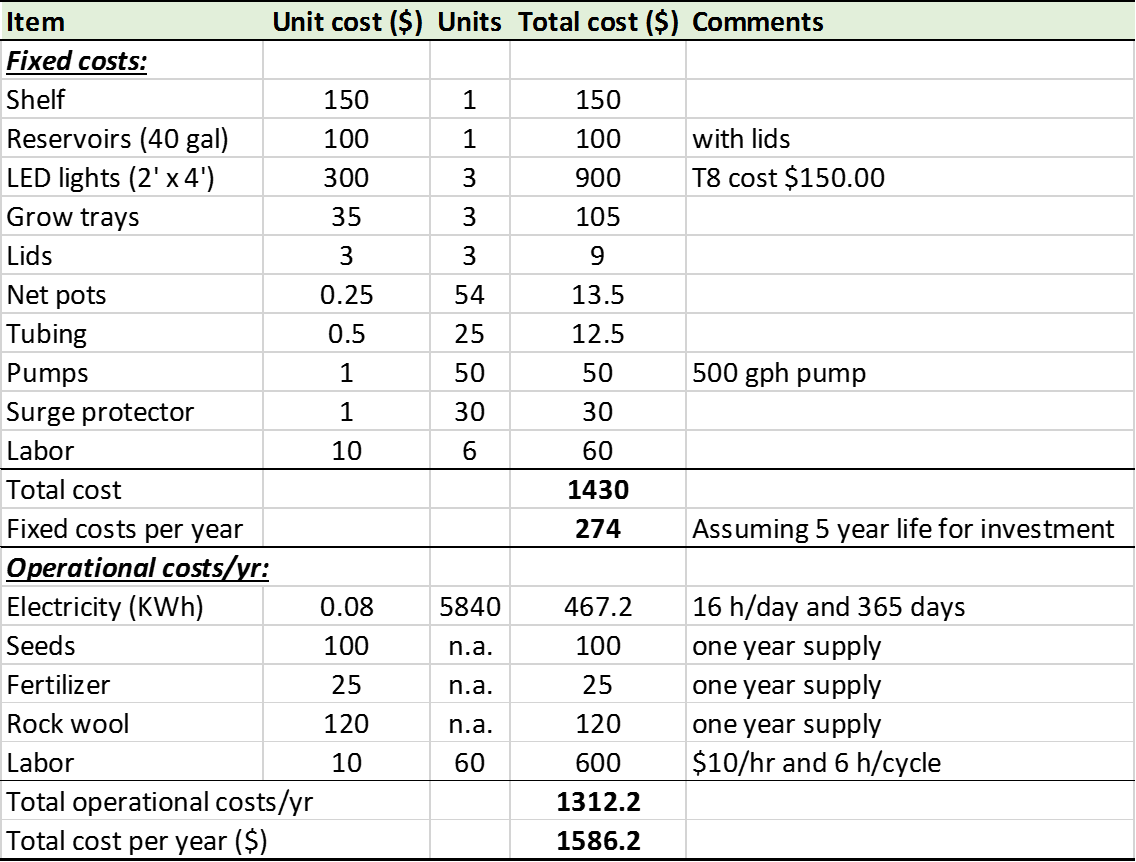Indoor farming involves growing leafy greens in vertically stacked layers inside a building or warehouse. There are several benefits associated with indoor farming: more food is produced per unit area compared to outdoor farming, fresh food is made readily available to consumers throughout the year, focus is on healthy foods like greens and herbs, increased access to and consumption of locally grown food, and food is produced with no pesticide use. These systems are well-suited for facilities like restaurants, small scale greenhouse operations, hospitals, schools, and nursing homes.
Indoor farming is a closed (recycling) system. Nutrient rich water is recycled between reservoir and production trays continuously for several hours every day. Energy efficient lights are used to grow crops in indoor farming to reduce energy costs (Fig. 1). Crops are grown at room temperature that is maintained for human comfort. Additionally, indoor production is completely automated. Lights and pumps can be turned on and off using timers. Crops are grown year-round to maximize production.

A layout of a small indoor farm with four shelving units is shown in Fig. 2. This farm can be built in a 15’ x 20’ indoor facility (e.g. basement or room). Each shelf is 2’ W x 4’ L x 7’ H. There are three levels in each shelf (as shown in the insert) for growing plants. Each level is approximately 18” high to accommodate lights, grow trays and plants. You can purchase grow trays that are 2’ W x 4’ L x 0.5’ H to grow high quality leafy greens and herbs. Seeds are sown in rockwool cubes and transplanted into grow trays approximately after a week of sowing.

There are several options for artificial lights. Both T8 fluorescent lamps and LED lights can be used for growing plants. LED lights are expensive; however, they last much longer and consume less electrical energy than other lights. Initial investment costs on LEDs can be recovered in 3-5 years. The T-8s are relatively less expensive, however their electrical energy consumption is higher and lamps may need to be replaced regularly. Moreover, their light output is lower than LEDs. It is recommended to use lights that can provide 200 µmol/m2/s (more is better) to plants. If you run such a fixture for 16 h per day, plants will receive 12 mol/ m2/day. Note that, in the system shown below, nutrient solution is recycled between reservoir and trays. A water-soluble commercial fertilizer can be used to make nutrient solution. We recommend an electrical conductivity (EC, a measure of fertilizer concentration) of approximately 1.5 dS/m or nitrogen at 150 ppm in the solution for growing leafy greens. Usually, leafy greens take four weeks to grow to a harvest size. It is recommended to start with a fresh nutrient solution during week 3 and 4. A reservoir that can hold up to 40 gal can supply nutrient solution to two shelves. A source of water for making nutrient solution at the site and drainage for used solution are needed in the room. In addition, a small area can be devoted to the nursery where seedlings can be grown before placing in the vertical farm.
The breakdown of fixed and operational costs to setup one shelf with three levels in an indoor farm is shown in Table 1. If you are interested, specialists at Purdue University can help to set up indoor farming systems.
